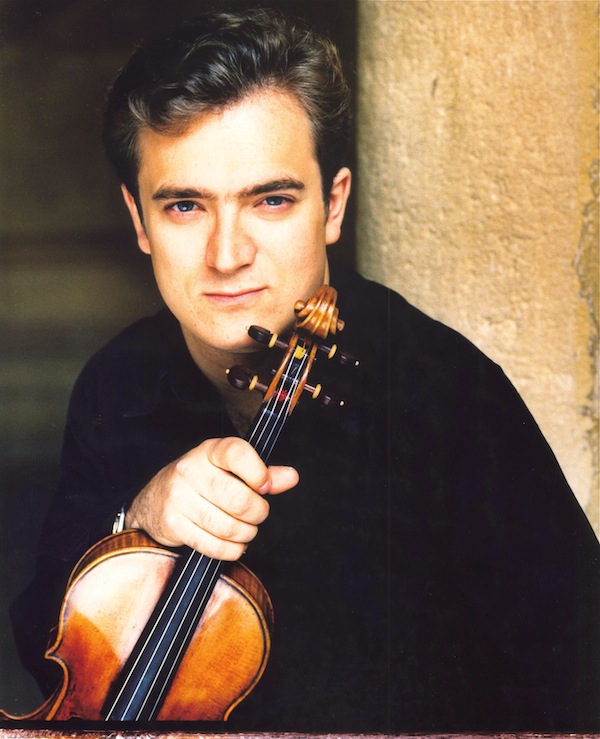
Renaud Capuçon & Stéphane Denève: Unmistakable French charm
By Sebastian Spreng, Visual Artist and Classical Music Writer
Two distinguished young representatives of the French tradition took part in a remarkable concert at the New World Symphony this November. Though Honegger was the only Gallic composer on a program that included works by Mendelssohn and Prokofiev, it was the artists’ form, style and color that lent the evening an unmistakable French flavor, a distinctive “charme” that left this critic wishing for their speedy return to our shores. Renaud Capucon, photo courtesy NWS
Conductor Stéphane Denève reconfirmed the outstanding impression he left last season, with Jean Yves Thibaudet as soloist. His brief, engaging explanation of Honegger’s seldom-performed Symphonie Liturgique prepared the audience to face the monumental composition, a harsh, pessimistic and difficult piece that because of its modernity could well have been composed yesterday. The descriptive violence of the horrors of war (passages in which the conductor achieved a remarkable differentiation of musical planes), the searing chords emanating from every section of the orchestra (with the brass playing a superb role), the “comments” of the flute and clarinet and the forcefulness of the strings all drove home the fact that the piece was a requiem written immediately after the war, a requiem without voices dedicated to both fallen and survivors that conveys a subtle message about the immutability of the human condition.
An abundance of solace came with Mendelssohn’s perennial Concert for Violin, as Renaud Capuçon achieved the remarkable feat of making us feel we were hearing it for the first time. It wasn’t just the flawless execution to which today’s high-level soloists have accustomed us. Capuçon went much further. He soared, not just as a virtuoso but also as a poet, endowing the piece with chamber-music-like lyricism, shaping it into an incessant song that poured forth luminously, like – in Mendelssohnian terms – a lied without words of uncommon fluidity and expressive brilliance. A far cry from Russian showmanship – and you could posit a certain parallel with the respective schools of ballet – Capuçon’s exquisiteness and elegance on the Guarneri del Gesù violin that once belonged to Isaac Stern brought back memories of such illustrious violinists of the French-Belgian tradition as Christian Ferras. Welcome, then, Renaud Capuçon’s clear and concise voice. He possesses the originality a field full of virtuosos needs. The symbiotic combination of conductor and violinist worked like a dream, giving the orchestra – and the audience – the chance to experience a happy Mendelssohn from the other side of the Rhine, a pastoral breeze with a hint of “Le déjeuner sur l’herbe”.
For the finale, a suite from Prokofiev’s Cinderella might seem anticlimactic, but the pieces chosen by Denève, different from the three suites assembled by the composer himself, served as a soothing balance to the Honegger work, especially considering that (incredibly) they are contemporaneous. In the shadow of the great Roméo et Juliette, Prokofiev’s opus is a Cinderellaonn in its own right. Denève’s suite explores to the full the percussive element, the characters’ tenderness and the adorable “reverse” waltzes so typical of the composer. Once again, the orchestra performed with noteworthy color and subtlety. Taking roads less traveled, the evening’s two stars led the New World Symphony and its audience on a path of unmistakable French charm.
Recent Content
-
Artsarticle ·
-
Artsarticle ·
-
Artsarticle ·
